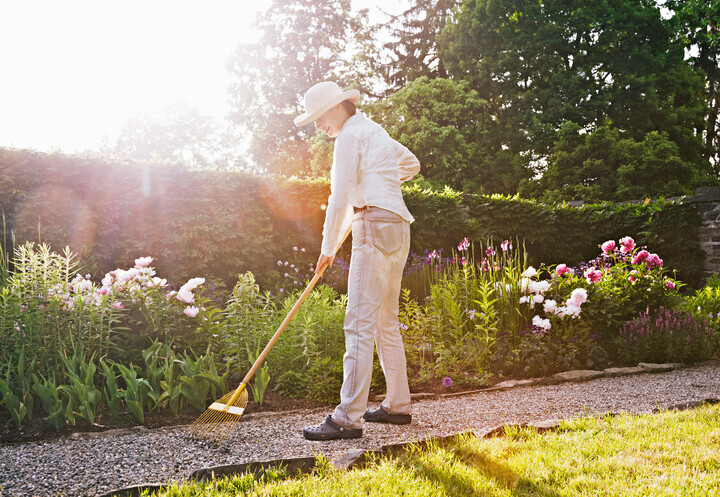Learn about Farrand's unique floral style and see how a team of spirited volunteers revived the historic century-old estate.

"It is work, hard work . . . and at the same time, it is perpetual pleasure." That's how Beatrix Farrand, one of the most influential garden designers of the early 20th century, described her life's calling. The niece of Edith Wharton, Farrand was the only female charter member of the American Society of Landscape Architects, founded in 1899. Over her 50-year career, she designed estates for the Morgans and Rockefellers, and spaces for Princeton and Yale Universities, as well as her lavish masterpiece, Dumbarton Oaks, in Washington, D.C. But tragically, few of her residential creations survive.

One rare gem, however, is thriving. Tucked away in Hyde Park, New York, a groundbreaking garden designed in 1912 by Farrand is bursting once again in a soft kaleidoscope of dreamy colors. Behind its revival is a spirited band of local volunteers, who discovered the site in a state of near ruin, rolled up their sleeves, and returned it to its former splendor, flower by beautiful flower.
Farrand devised Bellefield in 1912 for her cousin Thomas Newbold and his wife, Sarah. A striking union of simplicity and grandeur, naturalism and formal structure, the garden is enclosed by a stone wall adjoining a hemlock hedge and surrounds a rectangular lawn. Local fieldstones edge beds filled with perennials, annuals, and meadowy wildflowers. And the borders, which are organized by the unabashedly romantic colors of an impressionist's palette, are devised to bloom continuously from spring through fall -- a bold break from the Victorian convention of planting annuals every few months.
In the mid-1970s, descendants of the Newbold family donated the property to the U.S. National Parks Service, but over the following two decades, the garden languished. Its bones remained, but plants were lost, weeds took over, and hedges were both overgrown and ravaged by deer. Then, in 1994, gardeners discovered Bellefield and sprang into action, forming the nonprofit Beatrix Farrand Garden Association and hiring local horticulturist Anne Cleves Symmes to lead a restoration. Using old photographs and a similar plan from Farrand's archive, Symmes and a small group of volunteers set to work reviving her unique plant combinations. More than a century after Bellefield's inception, the work continues: Every Tuesday morning, volunteers show up to weed, deadhead, and plant the floriferous borders -- and carry forward a master's timeless vision.